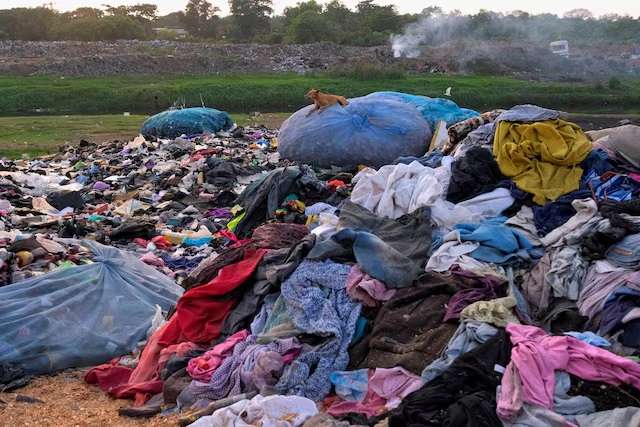
The fashion industry is a major contributor to textile waste, with Europe alone generating 5.2 million tons annually. France is proposing a ban on EU exports of used clothing, aiming to curb this waste and prevent African nations from becoming dumping grounds for unwanted garments. This proposal has sparked a debate, raising questions about its effectiveness, potential consequences, and alternative solutions.
A mounting waste crisis
Fast fashion, characterized by cheap, trendy clothing with a short lifespan, is a key driver of textile waste. The European Union alone generates a staggering 5.2 million tons of clothing and footwear waste annually, according to the European Commission. Much of this ends up in landfills or gets shipped to developing countries, particularly in Africa. A 2023 report by the European Environment Agency found that Europe dumps a whopping 90 per cent of its used clothes in Africa and Asia, raising concerns about pollution and environmental damage.
France's backs responsibility and sustainability
France, backed by Sweden and Denmark, argues that the EU must take responsibility for its waste. Their environment ministry emphasizes the environmental damage caused by overflowing landfills in Africa, stating, "Africa must no longer be the dustbin of fast-fashion." The proposed ban aims to incentivize waste reduction and promote a more sustainable clothing industry within the EU.
However, the effectiveness of a ban is debated. While it might reduce waste in Europe, it could disrupt economies in Africa that rely heavily on the second-hand clothing trade. Opponents argue the ban could potentially harm African livelihoods as millions in Africa rely on the sale of imported used clothing for income. A ban could threaten these jobs. Also, it could stifle domestic industry as some argue cheap used clothing hinders the growth of domestic textile industries in Africa. However, the quality of much of the imported clothing is poor, raising concerns about its overall impact. The ban could also disrupt existing trade agreements. A unilateral EU ban could violate existing trade agreements with African nations. The case of the East African Community's failed attempt to ban used clothing imports due to US pressure highlights this potential issue.
For example, the 2016-2020 trade dispute between the East African Community (EAC) and the US over used clothing imports exemplifies the complexities involved. While the EAC sought to boost domestic manufacturing, US pressure ultimately forced them to abandon the ban. This case demonstrates the potential for unintended consequences and the importance of international cooperation.
Dialogue and comprehensive solutions the way forward
Indeed, a complete ban on used clothing exports might be an oversimplification. Instead, a more comprehensive approach is likely needed. Experts suggest some possibilities:
Promoting sustainable Production: Incentivize European clothing manufacturers to adopt sustainable practices, such as using recycled materials and designing for durability.
Supporting local manufacturing in Africa: Offer technical and financial assistance to help African countries develop their textile industries and create a level playing field with imported goods.
Improve sorting and recycling systems: Invest in better infrastructure to sort and recycle used clothing within the EU, reducing reliance on export.
Global dialogue: An open dialogue between the EU, African nations, and other stakeholders is crucial to find solutions that address environmental concerns while protecting livelihoods and fostering development.
Certainly, the proposed EU ban on used clothing exports highlights the complex relationship between waste management, economic development, and global trade. While a complete ban might be a symbolic gesture, it's unlikely to be the most effective solution. A multi-pronged approach that addresses the root causes of textile waste and promotes a more sustainable clothing industry across the globe is likely a more promising path forward.












